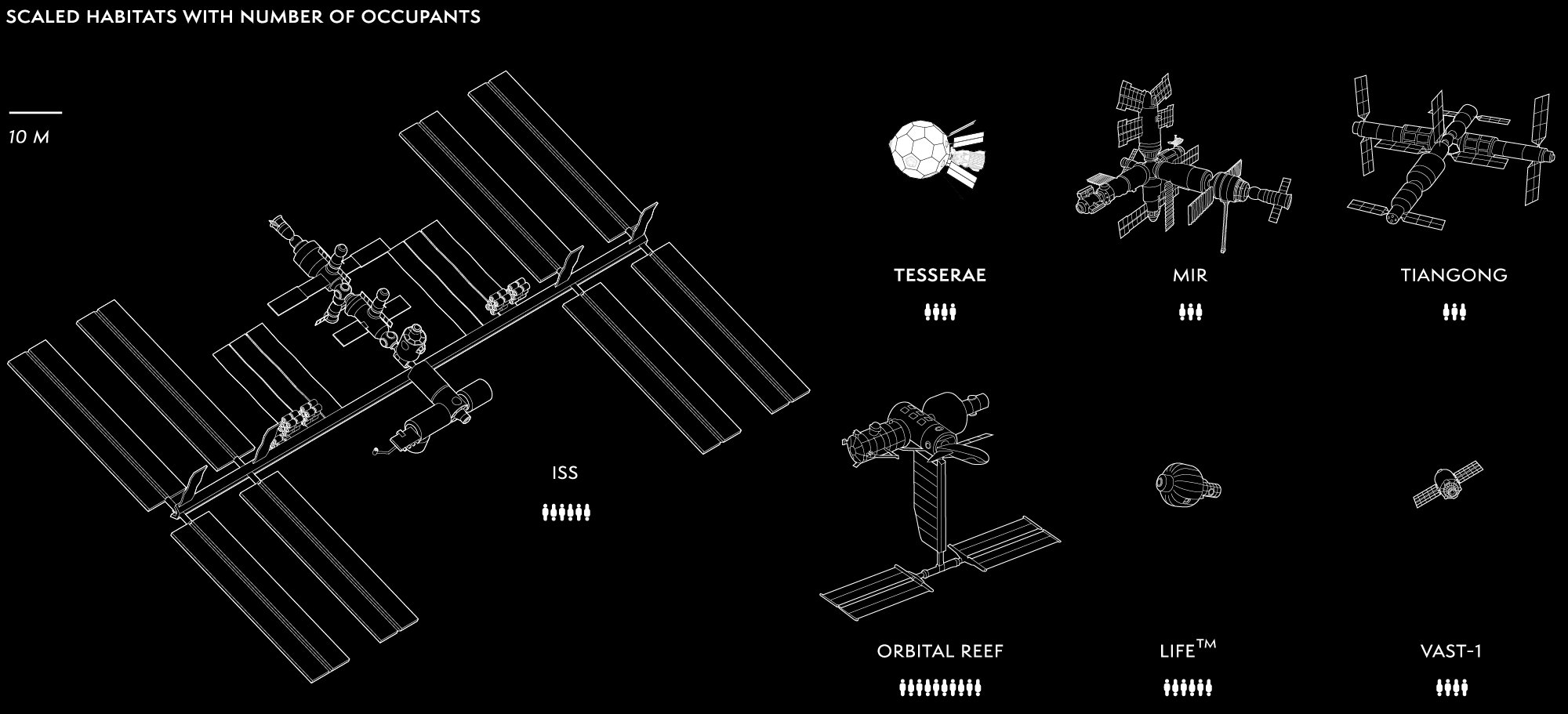SPACE HABITAT R&D
TESSERAE: Orbital Biolab
Aurelia Institute is working to envision a future for life in space that is both a departure from traditional design and backed by established spacecraft engineering principles. Following the publication of initial results from our Space Architecture Trade Study in 2023, and in parallel with iterative development of the TESSERAE hardware platform towards a future crewed habitat mission, the research team conducted a preliminary design analysis of a self-assembling TESSERAE habitat, with multiple use cases that scale infrastructure for the public good.
This analysis was presented as a paper at the 2024 International Conference on Environmental Systems, featured in CEO Ariel Ekblaw's 2025 TED Talk, and has been further developed with industry partners to explore using TESSERAE construction technology to build large volume, high-throughput space biotech factories. Check out our executive summary of the orbital biolab facility, as well as a summary of the key biotech manufacturing opportunities, available below:
The mission of TESSERAE, as envisioned in this case study, is to provide a microgravity platform capable of supporting a fulfilling human life, quality scientific research, and other related activities in Low-Earth Orbit in the 2030s.
In accordance with NASA’s goals for future Commercial LEO Destinations and the fast-growing market for biological research in microgravity, the habitat will serve as a biotechnology research station with three primary focuses:
Protein Crystallization
High-quality protein crystals grown in space can lead to more precise structural data, with many results leading to drug discovery for muscular dystrophy, breast cancer, or periodontal disease.
Biologic Medicines
A class of bulky, biobased pharmaceuticals that include proteins, enzymes, nucleic acids, and antibodies, isolated from a variety of natural resources. A low-gravity environment can accelerate the discovery and preclinical testing of these molecules.
Microgravity Tissue Growth
Organoids are advanced 3D structures derived from stem cells that mimic complex tissues and functions of the body. Microgravity provokes organoid development and behavior more analogous to tissues in the body.
Concept of Operations
TESSERAE is designed to deploy and assemble without the need for crew EVA (extravehicular activities), which incur tremendous costs and pose serious safety risks. Critical systems, such as the habitat’s power, thermal, avionics, life support, and guidance, navigation, and control systems, will be integrated prior to launch. The internal systems, such as the storage, partitions, research equipment, and other layout components, will be outfitted after assembly, once the habitat has been pressurized.
Occupancy
As envisioned, the TESSERAE habitat will host a crew of four: two visiting biotechnologists, who will be offered the unique opportunity to fly alongside their experiments, and two career astronauts.
With approximately 123 m³/person, TESSERAE offers a comparable pressurized volume to current agency-run space stations such as the ISS (168 m³/person, crew of six) and Tiangong (113 m³/person, crew of three).
Interior Layout
The habitat’s interior layout is informed by human-centered design principles intended to make the TESSERAE habitat a comfortable, safe, and engaging environment in which to work and live. Areas of activity and their relations are explored through four layout options, one of which is represented here. Ongoing work examines the feasibility of “softer” materials, customizable acoustics, and adjustable thermal zones.
Workspace Design
Preliminary user interviews with research scientists and an analysis of current microgravity workstation setups have yielded insights such as the need for task parallelization, experiment integrity, and flexible work areas that can be accessed from multiple angles, which in turn are informing the layout design of a typical TESSERAE workspace.
Subsystem Analyses
The case study also offers preliminary subsystem analysis and architecture recommendations for the habitat’s most critical systems, including its electrical power, thermal control, and life support systems. It provides in-depth examinations of the habitat’s structural design, interior layout options, and engineering requirements, including comparisons to prior designs and the current state of the art.








